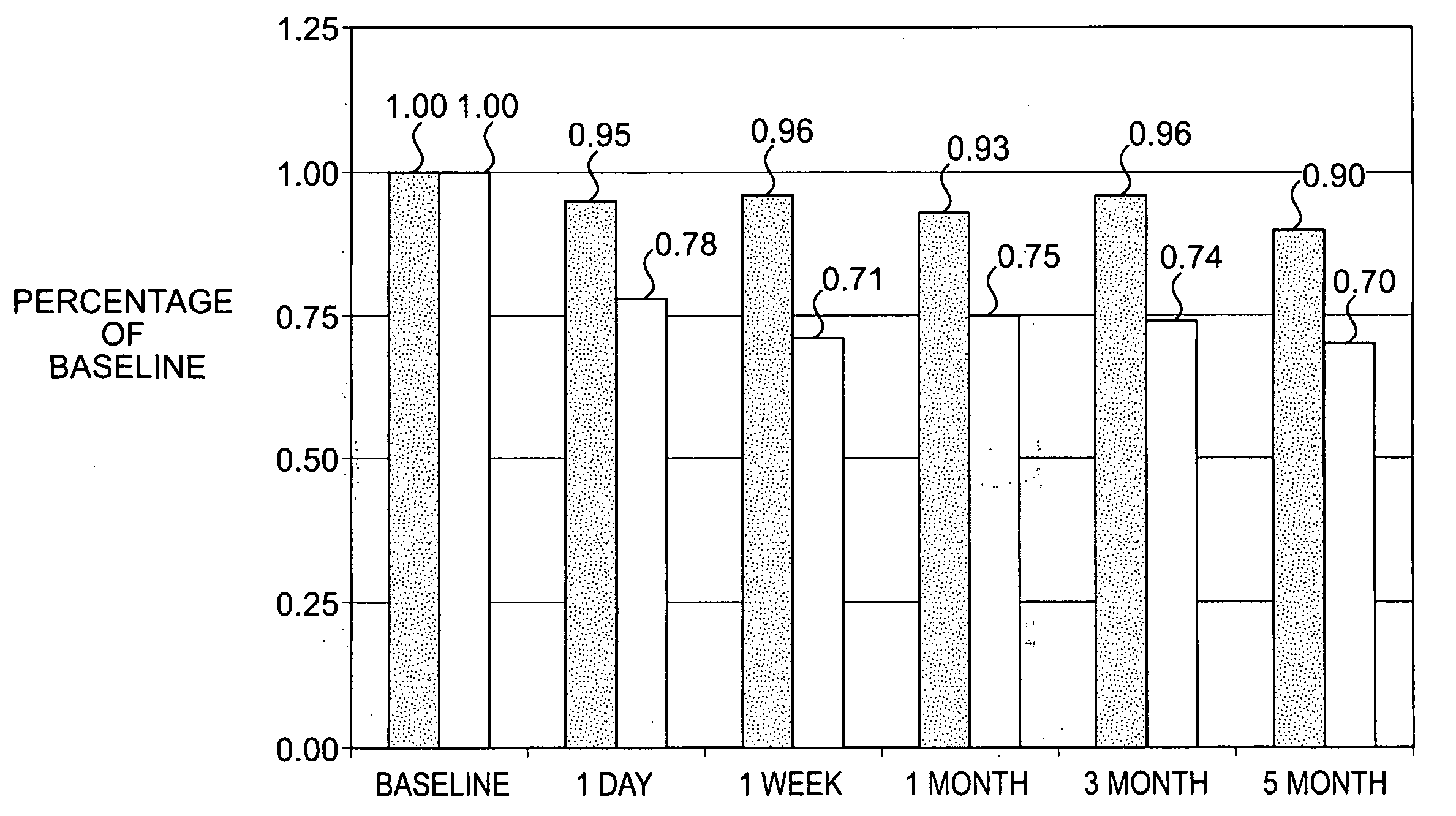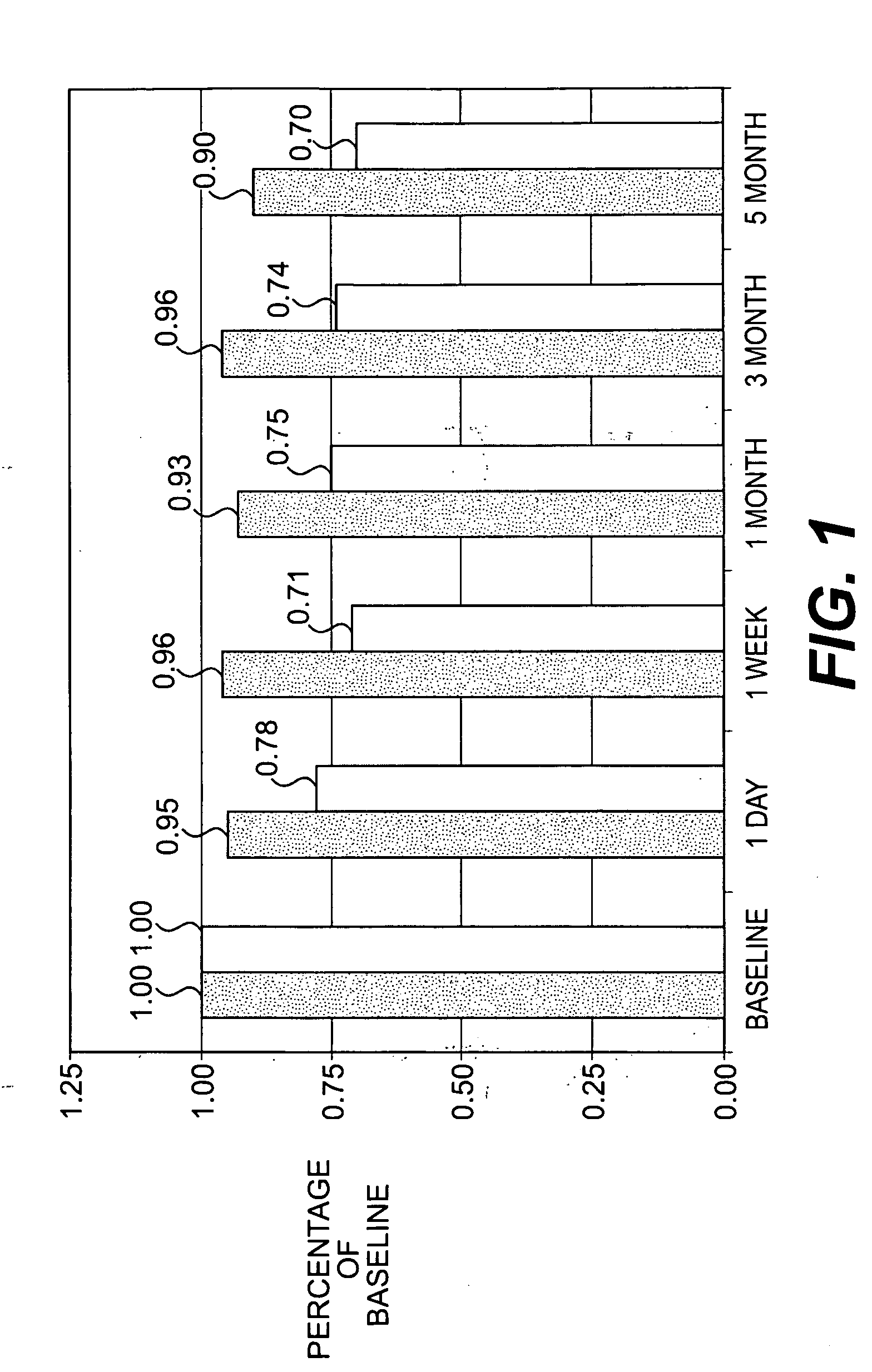Methods for stabilizing corneal tissue
- Summary
- Abstract
- Description
- Claims
- Application Information
AI Technical Summary
Benefits of technology
Problems solved by technology
Method used
Image
Examples
example 1
Transglutaminase Stabilizes the Shape of the Cornea Following Mechanical Deformation
[0069]Transglutaminase was studied in a series of ex vivo laboratory experiments on enucleated porcine cornea to optimize the effects of stabilization. Enucleated porcine eyes were placed in ice until treated. Prior to treatment, each eye was placed in a bracket for stability and subjected to topographical evaluation using the Optikon 2000 system. Six topographs of each eye were taken and true composites generated. The corneal surface was dried using sterile gauze and then wetted with drops of 0.02M disodium phosphate. The wetted eyes were again dried and exposed to drops of 0.02M disodium phosphate. A glass slide was balanced on the surface of the cornea. Solutions of transglutaminase and calcium chloride (CaCl2) were prepared in 50 mM TRIS buffer, pH 8.5. The pH of TRIS buffer was adjusted to 8.5 by adding 2.5N sodium hydroxide (NaOH). Transglutaminase was prepared at 1 mg / mL in 10 mL of TRIS buffe...
example 2
Toxicity Evaluation of Decorin in the Feline Eye
[0073]The purpose of the following evaluation was to determine if (1) there is toxicity associated with the use of decorin on the eye; (2) assess the penetration of decorin into the cornea; and (3) quantitate decorin in the cornea following exogenous application of decorin.
[0074]One, three, and five daily applications of decorin were assessed using female cats (6 months to 2 years of age) with normal corneas as the model system. The decorin was obtained as a dry powder (Sigma Chem. Co., Milwaukee, Wis.) and reconstituted in a 0.1 M phosphate buffer. In order to perform the microscopic evaluations, decorin was labeled with Oregon Green 514 using a commercially available kit from Molecular Probes.
[0075]Five cats were used in the study. Each cat was sedated prior to topical application of medication or photography of the eye. All animals received an ocular examination and photographs (whole eye, slit lamp, and endothelial cells) prior to ...
example 3
Measurement of Corneal Hysteresis in the Feline Model
[0082]The effects of decorin (human recombinant decorin provided by Catalent, Inc., Wisconsin) application on the biomechanical properties of the feline cornea were measured in five animals in a study performed at the Dartmouth-Hitchcock Surgical Research Center, Lebanon, N.H. Chemical agents were administered to the treated eyes to enhance decorin penetration and to dissociate proteoglycan bridges between collagen fibers, as referenced in paragraph [062]. The biomechanical integrity of the cornea was measured using the Reichert Ocular Response Analyzer (ORA). The ORA utilizes a dynamic by-directional applanation process to measure corneal hysteresis (CH).
[0083]Table 2 shows the results from this study.
TABLE 2Stabilization of Cornea Biomechanical properties followingApplication of Decorin SolutionBeforeAfter decorinAfterAnimal #Decorin (CH)Treatment (CH)21 DaysAHH35.507.437.50QJD43.906.306.90RAF63.135.186.20BEA43.654.806.20IRH67.9...
PUM
 Login to View More
Login to View More Abstract
Description
Claims
Application Information
 Login to View More
Login to View More - R&D
- Intellectual Property
- Life Sciences
- Materials
- Tech Scout
- Unparalleled Data Quality
- Higher Quality Content
- 60% Fewer Hallucinations
Browse by: Latest US Patents, China's latest patents, Technical Efficacy Thesaurus, Application Domain, Technology Topic, Popular Technical Reports.
© 2025 PatSnap. All rights reserved.Legal|Privacy policy|Modern Slavery Act Transparency Statement|Sitemap|About US| Contact US: help@patsnap.com



